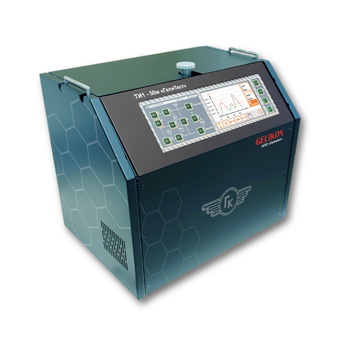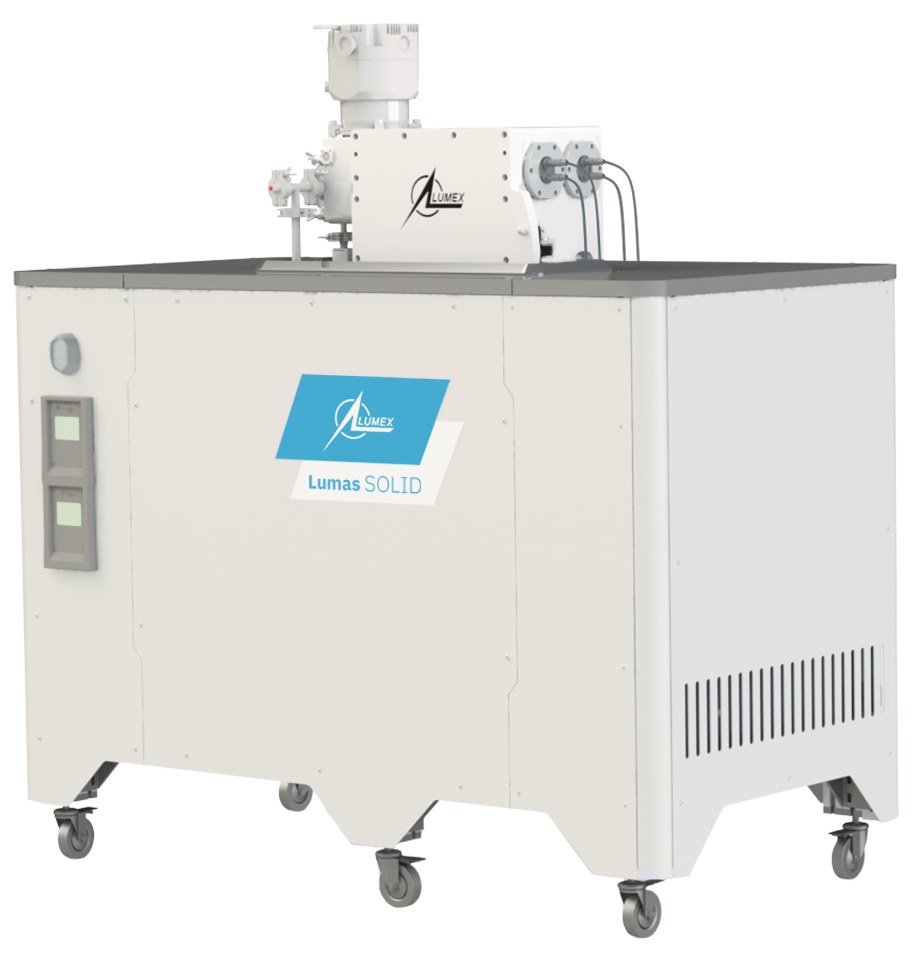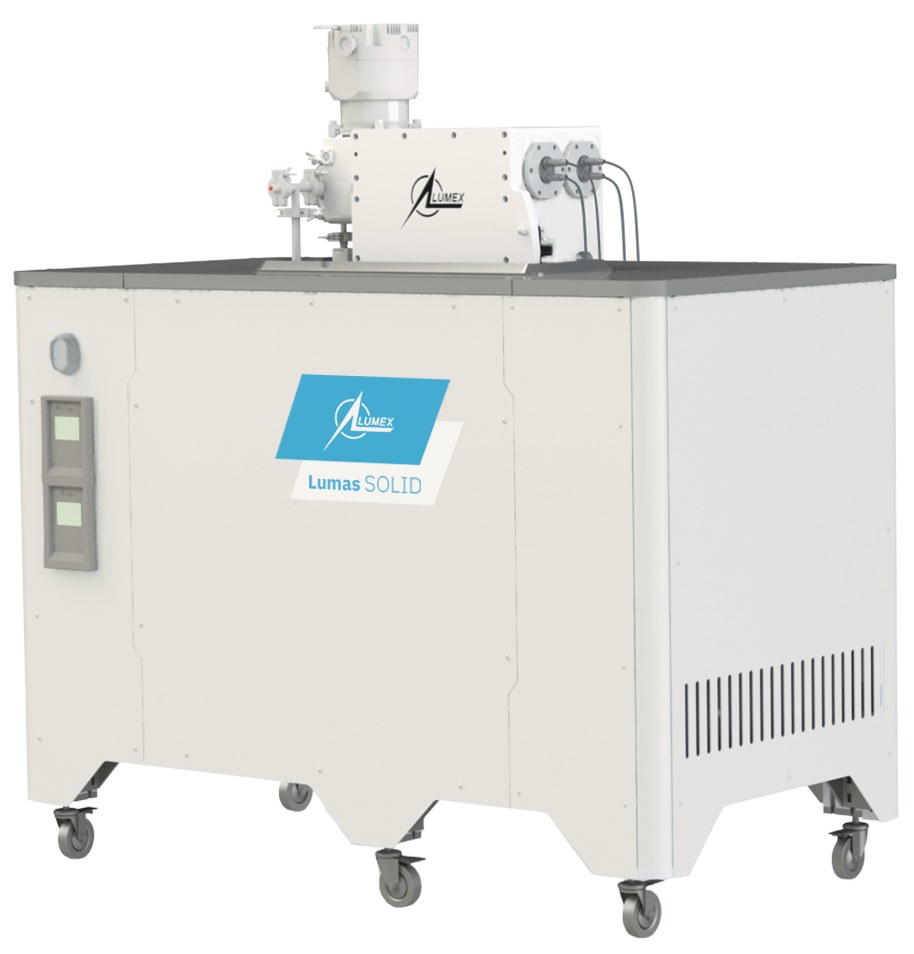Catalog
Search
4 products
View:
- Selected: 0Areas of use
- Selected: 1Item names
- Selected: 0Manufacturer
- Selected: 0Made in
- Selected: 0Additional
View:
4 products

Helium mass-spectrometric leak detector TI1-50M “HeliTest” from NPO “Helikon”
The helium leak detector TI1-50M is a universal highly sensitive device designed to test the tightness of various systems and objects that allow pumping out the internal cavity, as well as those filled with helium or a mixture containing helium, and detect (localize) places of leakage (leaks). Specifications: Measuring range at the leak detector inlet, Pa•m3/s from 5•10-13 to 1•10-5; Range of indications when working by probe method, Pa•m3/s from 1•10-9 to 1•10-5; Time to enter the readiness mode for measurements, no more than, min 5; AC supply voltage, V, Hz 220±10%, 50±1; Power consumption, VA 1200; Overall dimensions (WxHxD), no more than, mm 480x470x390; Weight, no more than, kg 40; Average time to metrological failure, h 15000;
NPO "Gelikon"
Saint Petersburg
Produced in: Saint Petersburg

MAESTRO-αMS gas chromatograph by Interlab
We offer expert laboratories of physicochemical methods of analysis a gas chromatograph with a quadrupole mass spectrometric detector «MAESTRO-αMS». Quadrupole GC-MS «MAESTRO-αMS» is in demand for targeted research (screening) and non-targeted search. In targeted studies, it is necessary to detect given target compounds in samples of various nature and origin at the level of residual amounts, for example, several picograms of the target compound in the injected 1 μl of liquid sample. Most often, targeted research is carried out in the following areas of laboratory screening: ecology, food safety, clinical monitoring, narcology, doping control, production control of various raw materials. In targeted studies, it is often required not only to confirm the presence of a compound in a sample, but also to determine the level of its content quantitatively, since both the list of target compounds and the permissible level of their presence in the sample are specified by regulatory documents. Quantitative analysis requires standards for the substances you are looking for. When conducting a non-target search, as a rule, it is required to analyze a sample of unknown composition, in other words, to find as many compounds as possible in the sample and identify (identify) each of them. Since the identification of a detected compound is carried out by comparing its experimental mass spectrum with the spectrum of a pure substance obtained under standard conditions, this task requires reference libraries of mass spectra of pure substances, as well as tools for working with mass spectra, for example: algorithms for cleaning experimental mass spectra from background and spectral noise (mass spectrum deconvolution algorithms), library search and comparison algorithms. An off-target search is called a qualitative analysis, since the researcher is primarily interested in the list of detected substances, and not in the quantitative assessment of their content in the sample. When creating MAESTRO-αMS, we took into account our own many years of experience in operating imported analogues. We have made the device inexpensive. We have made the device compact: The modern design of the device made it possible to make the MAESTRO-αMS really compact, so that the device occupies the smallest possible area on the laboratory table. The layout of the device allows you to remove the ion source on the front flange for cleaning and replacing the cathodes, if necessary. We have reduced the cost of operation: When developing the MAESTRO-αMS, we sought to increase the resistance of the device to sample matrices and use a minimum of consumable materials in order to eliminate downtime for maintenance and replacement. As a result, we have created an extremely stable ion source and a perpetual photomultiplier detector. We have created special software: Even at the first acquaintance with the software, it becomes obvious that being in the window of each button and each parameter to be changed is expedient and logical. Our software product was created for the convenience of the operator, so we implemented the necessary and eliminated the unnecessary. We used the principle of one active window, in which the operator moves sequentially step by step, performing hardware settings, setting the data collection method, subsequent processing algorithms, templates for presenting the results. MAESTRO-αMS offers a wide range of scanning modes, built-in algorithms for working with mass spectral data, convenient unloading of initial data arrays for their processing in specialized software packages, graphics export for presentations and scientific publications. You can use several libraries of mass spectra at the same time, or create your own for your typical tasks. Finally, we provide a 5-day training course for professionals who want to understand the theoretical foundations of the method and their implementation in the hardware of modern quadrupole GC/MS. The volume and depth of presentation of the material from the developers of the device is intended to lay the foundation for the effective use of «MAESTRO-αMS» in the future. Some technical characteristics of MAESTRO-αMS: • Instrumental detection limit (SIM, OFN @272 m/z ) < 10 fg; • Scan modes: scan for selected ions, full scan in a given mass range, combined scan mode; • The number of simultaneously connected libraries of mass spectra is at least 10.
INTERLAB
Moscow
Produced in: Moscow

Mass spectrometer for the analysis of solid-phase samples "Lumas GAS"
2 supp.
from
218.11 ₽
Technical specifications:
Ionization method Glow discharge plasma
Discharge gas Air
Time-of-flight Mass Analyzer with mesh-free ion mirror
Resolution 4000
The number of simultaneously defined components is not limited
Mass range 1-1000 m/z Detection limits 10-100 ppt
Analysis time 1-3 min Vacuum system 1 Booster pump and 2 TMN (240 l/sec)
Overall dimensions 1450×780×1550 mm
Lumeks
Saint Petersburg
Produced in: Saint Petersburg

Mass spectrometer for the analysis of solid-phase samples "Lumas SOLID"
1 supp.
Technical specifications:
Method of ionization Plasma pulsed glow discharge
Discharge gas Argon, consumption less than 1 l/hour
Time-of-flight Mass Analyzer with mesh-free ion mirror
Resolution 4000
The number of simultaneously defined components is unlimited
Mass range 1-1000 m/z
Detection limits 1-100 ppb
Layer-by-layer resolution Up to 5 nm
Depth of analysis Up to 30 microns
The time for one analysis of a solid sample is 30 minutes (with the option of a revolver system – 3-5 minutes) Vacuum system 1 Booster pump and 2 TMN (240 l/sec)
Overall dimensions 1450×780×1550 mm
Lumeks
Saint Petersburg
Produced in: Saint Petersburg
